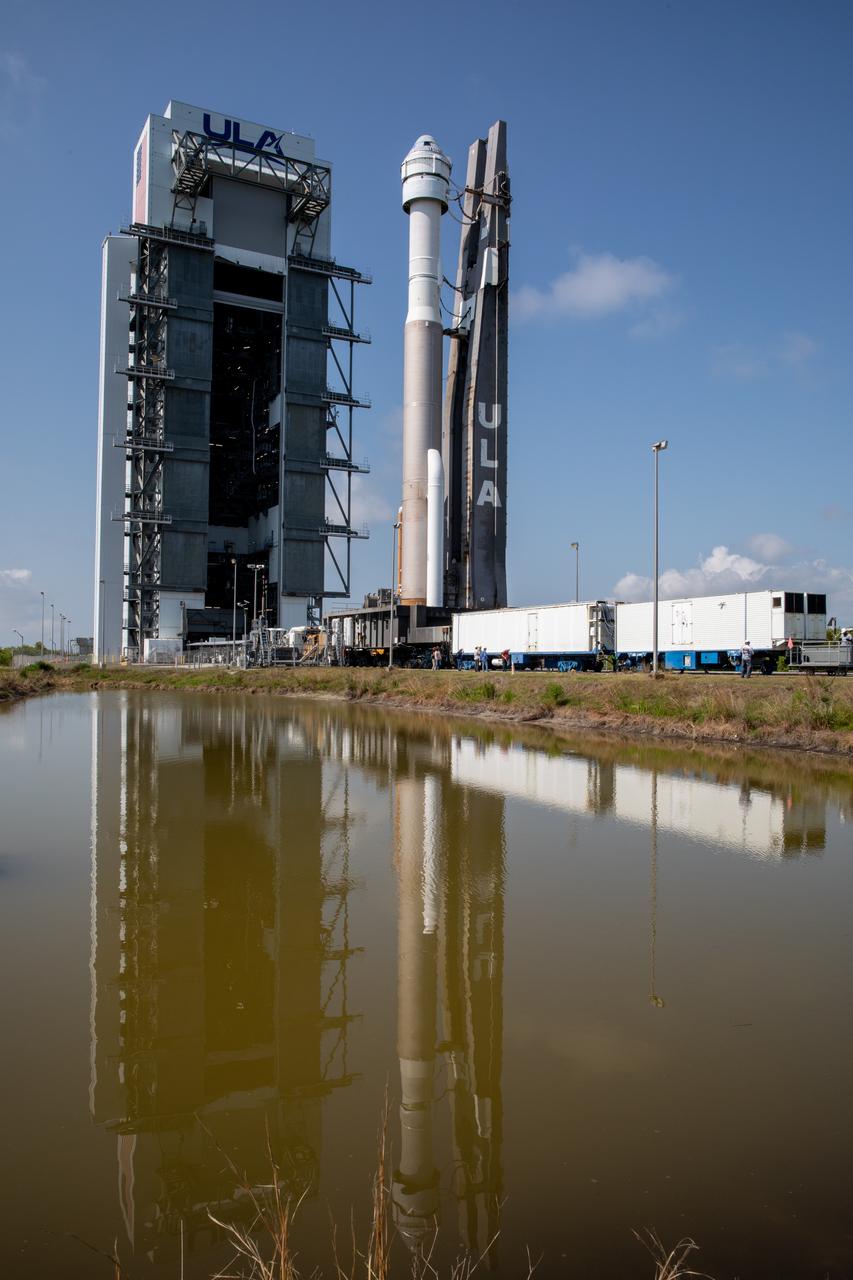United Launch Alliance’s Atlas V rocket that will launch Boeing’s CST-100 Starliner to the International Space Station for NASA’s Commercial Crew Program was modified specifically for the agency’s Orbital Flight Test-2. This rocket configuration does not include a payload fairing. Instead, the Starliner’s own protective surfaces will take the place of the fairing to protect the uncrewed spacecraft during launch and ascent. The rocket has two solid rocket boosters (SRBs) and a dual-engine Centaur upper stage. Starliner is attached to the Atlas V using a launch vehicle adapter, which includes an aeroskirt to reduce the aerodynamic loads on the vehicle.
The Atlas V booster is 12.5 feet in diameter and 106.5 feet in length. The booster’s propulsion is provided by the RD-180 engine system, which delivers 860,200 pounds of thrust at sea level. The SRBs generate the additional power required at liftoff, with each providing 348,500 pounds of thrust.
The Centaur second stage is 10 feet in diameter and 41.5 feet in length. For this configuration, the Centaur is configured with dual RL10A-4-2 engines, each producing 22,600 pounds of thrust. The cryogenic tanks are insulated with a combination of helium-purge blankets, radiation shields, and spray-on foam insulation. The Centaur includes an Emergency Detection System that monitors for critical hazards. This system will provide critical in-flight data which supports jettison of the ascent cover and initiates CST-100 spacecraft separation.
Learn more at www.ulalaunch.com.



